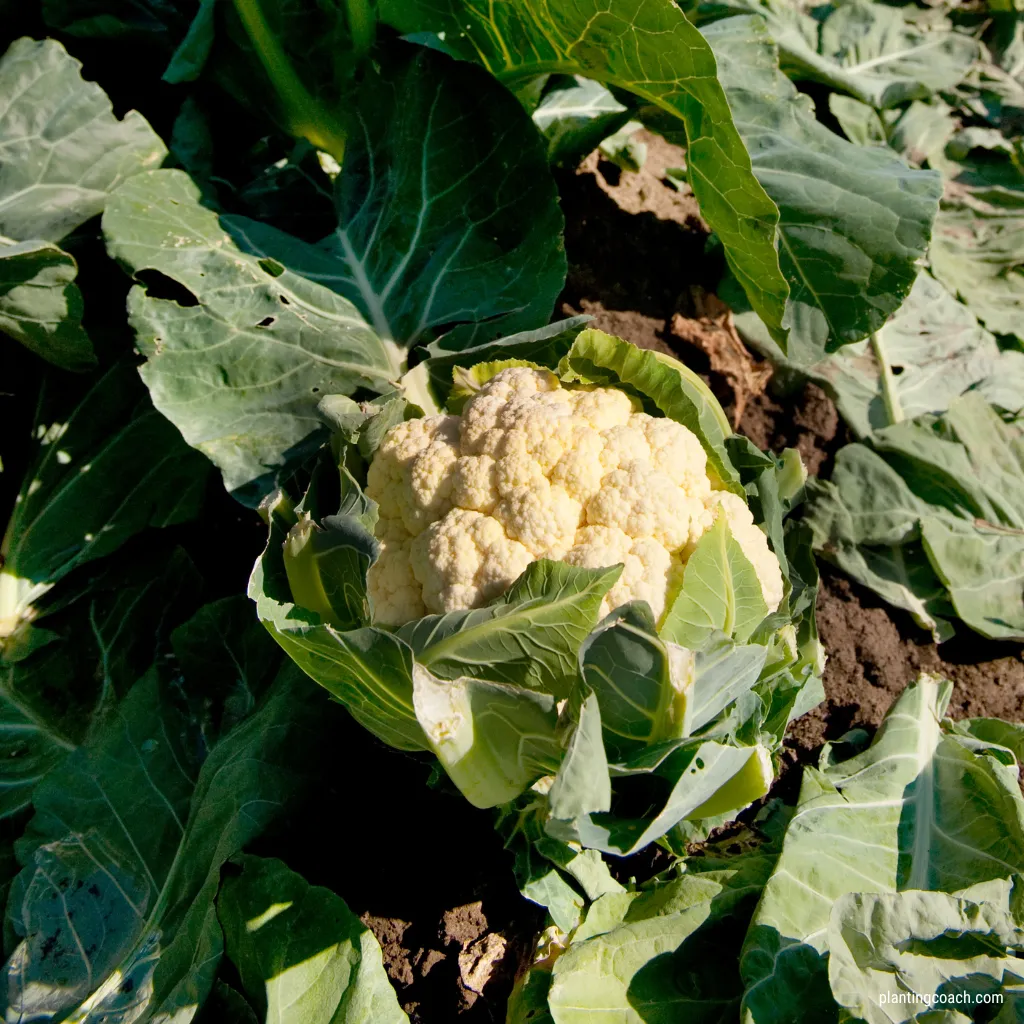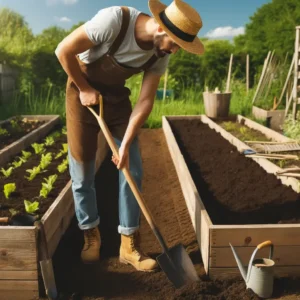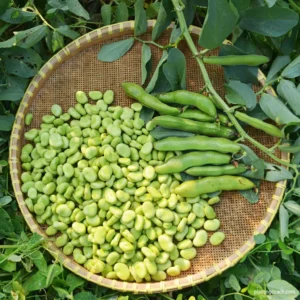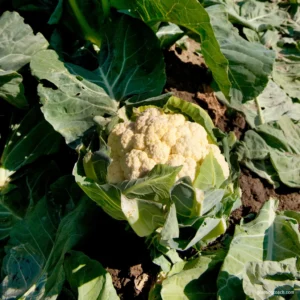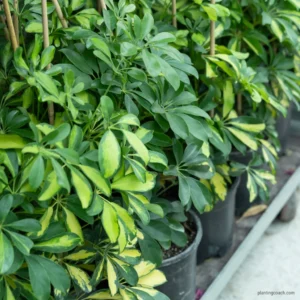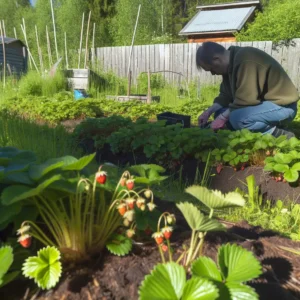Cauliflower, also known as Brassica oleracea, is a variety of cabbage that grows in almost all regions given proper condition and care. Being rich in nutrients and low in calories, it has been a popular option in health-conscious communities around the world. Growing cauliflower can be a bit challenging compared to other vegetables, but with the right knowledge and techniques, it yields rewarding results. Understanding when to plant cauliflower and how to care for it through its growth cycle is very crucial. This article will cover everything you need to know about How to Grow Cauliflower, from planting to harvesting. So, let’s dive in and learn how to cultivate this wonderful crop successfully.
How to Grow Cauliflower
Understanding the Cauliflower Plant
Cauliflower belongs to the Brassica family, sharing kinship with broccoli, kale, and cabbage. This cool-season crop flourishes in moderate climates and typically requires consistent temperatures to develop compact, unblemished heads. The key to a successful cauliflower crop lies in understanding its growth requirements and environmental preferences.
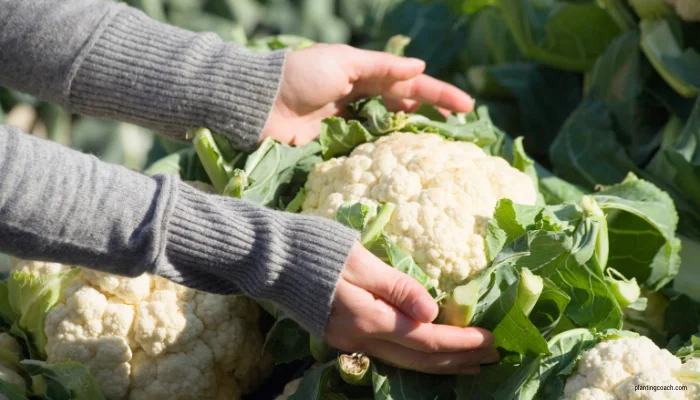
Most cauliflower varieties need about 1.5 to 2 months of cool weather to mature properly, which is why timing is crucial. The plant’s ability to thrive depends largely on steady growth, which can be interrupted by extreme temperature shifts. When selecting cauliflower varieties, consider your local climate and the season—some are better suited for early spring, while others are developed for fall planting. Understanding these prerequisites will help you select the right variety that is most likely to succeed in your garden conditions.
When to Plant Cauliflower
Timing is critical when it comes to planting cauliflower. In most regions, there are two optimal planting times: spring and fall. For a spring harvest, start seeding indoors 4 to 6 weeks before the last frost date, then transplant seedlings into the garden once the danger of frost has passed and soil temperatures are at least 50°F. This typically results in early summer harvests. Alternatively, for a fall harvest, direct sow seeds in mid to late summer so that your plants mature as cooler weather sets in.
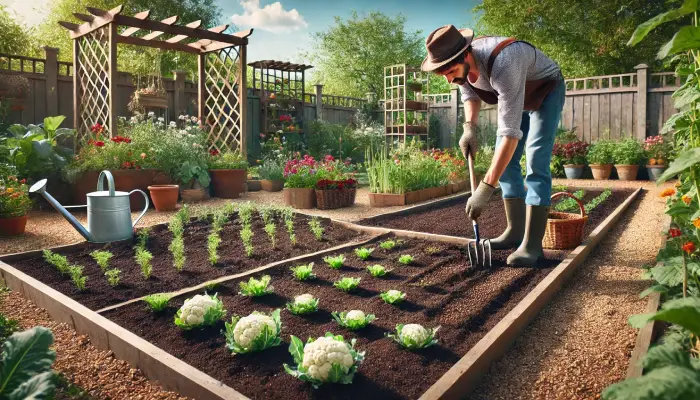
When planning your planting, consider the length of your growing season and the specific variety’s maturity time. Cauliflower plants are sensitive to heat; too much warmth can prevent them from forming heads or cause them to develop prematurely. In cooler climates, planting can be timed so that the crop matures in the chill of autumn, whereas in warmer areas, a late winter or early spring planting might be more successful in avoiding the summer heat.
How to Plant Cauliflower
Planting cauliflower successfully begins with careful preparation. If you’re starting with seeds, it’s best to sow them indoors under controlled conditions to protect them from the harsh elements. Use seed trays filled with a high-quality seed and plant the seeds about 1/4 to 1/2 inch deep. Keep the soil moist but not waterlogged, and maintain a temperature around 65°F to 70°F, which is ideal for germination. Expect the seeds to sprout in 5 to 10 days.
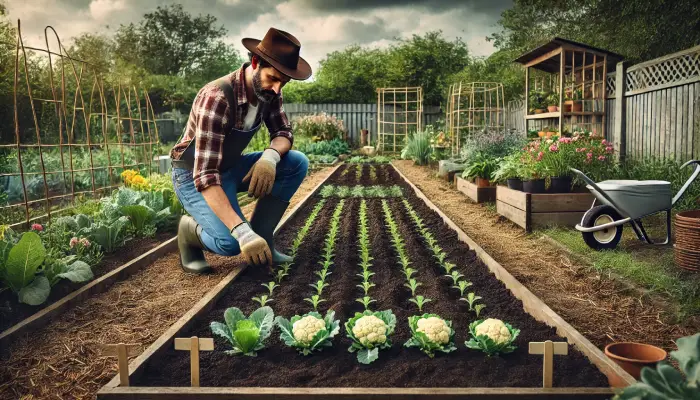
Once your seedlings have developed two to three leaves and stand about 4 to 5 inches tall, they’re ready to be transplanted. Harden off the plants gradually by exposing them to outdoor conditions for a few hours each day over a week to prevent shock. When transplanting, choose a cloudy day or late afternoon to minimize stress. Space the seedlings about 18 to 24 inches apart in rows, allowing about 30 inches between rows. This spacing gives each plant enough room to grow and ensures good air circulation, reducing the risk of fungal diseases.
Proper soil preparation is key to growing healthy cauliflower. The soil should be well-draining, rich in organic matter, and have a pH between 6.5 and 6.8. Before planting, enrich your garden bed with compost or well-rotted manure to improve fertility and soil structure. A consistent watering regime is essential, especially during dry periods, to ensure uninterrupted growth and prevent the heads from splitting.
Growing Cauliflower from Seed
Growing cauliflower from seed allows you to control the earliest stages of your vegetable’s development. Start your seeds indoors about six weeks before the last expected frost date. Using a sterile seed starting mix can prevent common soil-borne diseases and provide a nutrient-rich environment for young seedlings. Make sure the seed trays receive adequate light—either from a sunny window or a grow light—to prevent legginess.
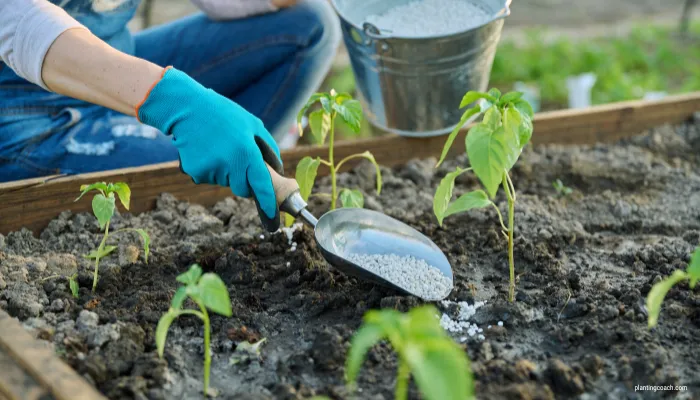
After the seedlings have been hardened off and transplanted, focus on maintaining optimal growing conditions. Cauliflower needs consistent moisture to thrive; irregular watering can lead to poor head development. Implement a drip irrigation system or use mulch to help retain soil moisture and maintain even soil temperatures. Additionally, a balanced, slow-release fertilizer applied at planting and midway through the growing season can support robust growth.
To encourage the formation of large, white heads, blanching is necessary for most white cauliflower varieties. This involves tying the outer leaves over the developing head when it’s about the size of a tennis ball. Use soft twine or elastic bands to hold the leaves in place, preventing sunlight from reaching the head and keeping it tender and pale.
Cauliflower Care Tips
Cauliflower requires attentive care throughout its growing cycle. Consistency is the plant’s best friend, particularly when it comes to watering and nutrient application. Water the plants deeply at least once a week, more frequently during hot, dry spells. Moisture stress can cause the plant to halt growth temporarily, affecting the quality of the produce.
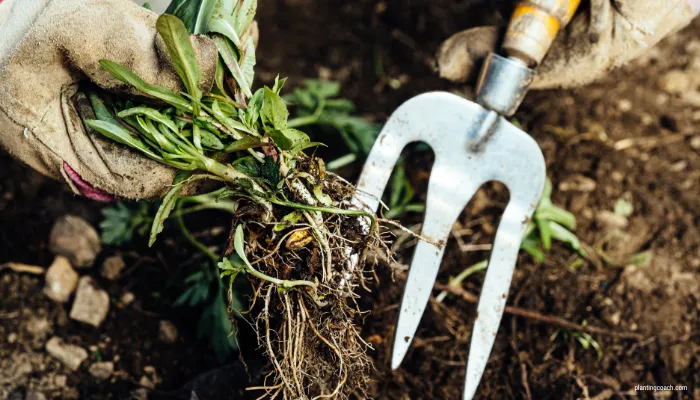
Feeding your cauliflower plants every 4 to 6 weeks with a nitrogen-rich fertilizer will help maintain steady growth. However, be cautious not to over-fertilize, as this can lead to lush foliage at the expense of head development. Keeping the area weed-free is crucial since weeds compete with cauliflower for nutrients and water.
Regularly check your plants for signs of stress or pest infestation. Common pests include aphids, flea beetles, and cabbage worms. Use appropriate organic pesticides or introduce beneficial insects to manage these pests without harming your crop. Monitoring and addressing these issues promptly can prevent minor problems from becoming major setbacks in your cauliflower garden.
Protecting Cauliflower from Common Problems
Growing cauliflower can be challenging due to various pests and diseases that might affect the crop. Vigilance and preventive measures are crucial to ensuring healthy growth. Cauliflower’s common problems include pests like cabbage loopers, flea beetles, and aphids, which can be managed using organic pesticides or by encouraging natural predators such as ladybugs and lacewings into the garden. Covering your plants with row covers can also prevent pests from reaching them.
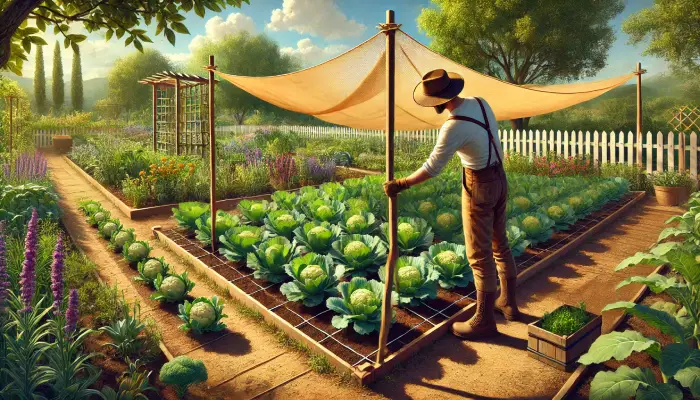
Diseases such as clubroot and black rot pose significant threats to cauliflower plants. These can be minimized by rotating crops each year, avoiding planting cauliflower or other Brassicas in the same location consecutively. Ensure your soil is well-draining and maintain a neutral pH to discourage disease accumulation. If you encounter diseased plants, remove and destroy them immediately to prevent the spread to healthy plants.
Weather-related stresses, such as extreme temperatures, can prevent heads from forming properly. Protect your plants from intense heat by providing shade cloth during the hottest parts of the day. In icy climates, a layer of straw mulch can help protect the roots from freezing.
Harvesting and Storing Cauliflower
Harvesting cauliflower at the right time ensures the best flavor and texture. When the head looks full and compact, with the curds tightly packed, it is ready to harvest. This typically occurs about 7 to 12 weeks after transplanting, depending on the variety. Use a sharp knife to cut the stem below the head, leaving a few leaves around the head to protect it.
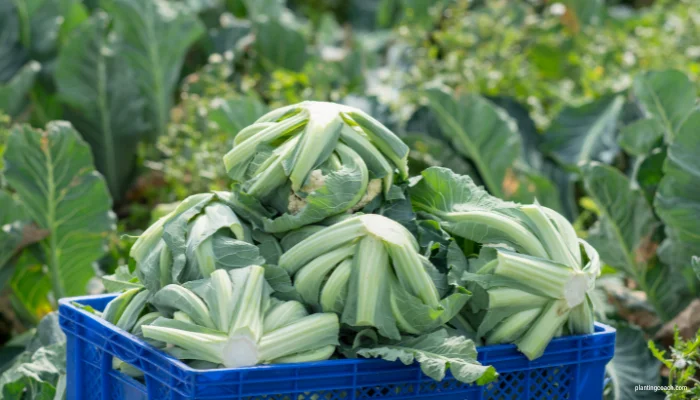
After harvesting, cauliflower can be stored in the refrigerator for up to two weeks. If you plan to store it for an extended period, blanch the heads and freeze them. Alternatively, cauliflower can be pickled or fermented to extend its shelf life and provide a flavorful addition to meals.
For commercial growers or those interested in seed saving, allowing a few plants to flower and set seed can be beneficial. The seeds can be collected and stored in a cool, dry place for future planting.
Planning for Long-Term Cauliflower Care
Ensuring a long-term supply of cauliflower requires good crop management and rotation practices. It’s advisable to rotate your cauliflower with non-Brassica crops to reduce the risk of soil-borne diseases and nutrient depletion. Improve soil fertility between cauliflower crops by growing green manures, such as clover or vetch, which can also improve soil structure.
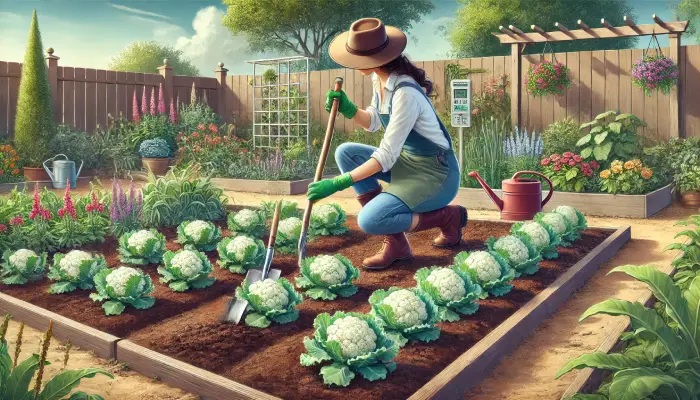
Every few years, rejuvenate your cauliflower growing areas by adding fresh organic matter and checking soil pH levels. If the pH has become too acidic, apply garden lime to bring it back to a neutral range, which is optimal for cauliflower growth.
Remember, growing cauliflower can be a rewarding venture that adds variety and nutrition to your diet. With proper care, attention to environmental needs, and protection from pests and diseases, you can enjoy abundant cauliflower harvests each season.
Summary
Growing cauliflower successfully requires understanding its needs from planting to harvest. This guide has covered everything from selecting the right time and method for planting cauliflower, caring for young plants, to protecting them from common pests and diseases. Regular care, proper fertilization, and vigilant pest management ensure healthy growth and bountiful harvests. By harvesting at the right time, you can enjoy the fresh, crisp taste of home-grown cauliflower, and with proper storage techniques, you can extend its shelf life. Remember, crop rotation and soil management are crucial for sustainable cultivation. Learn these practices and enjoy the rewards of growing your own cauliflower, a versatile and nutritious addition to any garden.
FAQ
Q1: How long does it take to grow cauliflower?
A1: Cauliflower typically takes about 16 to 24 weeks from planting to harvest, depending on the variety and growing conditions. This includes approximately 4 to 6 weeks for seedlings to mature enough for transplanting, followed by 12 to 18 weeks of growth before the heads are ready to harvest.
Q2: Is cauliflower challenging to grow?
A2: Cauliflower can be somewhat challenging to grow, mainly because it requires consistent conditions of cool temperatures and sufficient moisture. It’s sensitive to temperature fluctuations, which can affect head formation. However, with careful management of the growing environment, it’s quite manageable, especially for gardeners with some experience.
Q3: How many heads of cauliflower do you get from one plant?
A3: Typically, each cauliflower plant produces one head. However, if the main head is harvested early enough and the plant remains healthy, some varieties can produce smaller side shoots that can also develop into mini heads.
Q4: What is the best fertilizer for cauliflower?
A4: Cauliflower plants thrive with fertilizers high in nitrogen, which results in healthy leaf growth. A balanced 10-10-10 NPK (nitrogen, phosphorus, potassium) fertilizer is commonly recommended. Apply fertilizer several weeks after planting and again when the heads begin to form to support robust growth.
Q5: How do you prepare soil for cauliflower?
A5: Prepare the soil by ensuring it is well-draining and fertile. Add plenty of organic matter, such as compost or aged manure, to enrich the soil. The soil pH should be slightly alkaline, between 6.5 and 7.5. Test the soil pH and adjust if necessary, using lime to increase alkalinity or sulfur to decrease it. Proper preparation helps prevent common problems and promotes strong growth.
